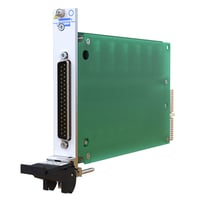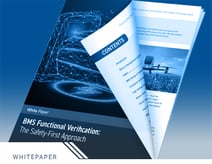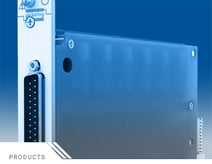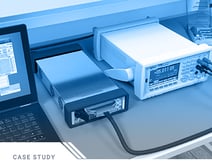Using Hardware-in-the-Loop Simulation for BMS Testing in Electric Vehicles
Co-authored by Brent Hoerman, Project Manager - EV/Battery at DMC, Inc. (part of Pickering's Partner Program)
Electric vehicles represent an evolving frontier in automotive design. With high voltage systems, complex battery management, and advanced connectivity, validating these vehicles requires rigorous simulation early and often.
The BMS is a complex electronic system that manages the safety, operation, and performance of the battery pack and the high levels of electrical energy stored within it. For BMSs, hardware-in-the-loop (HIL) testing is essential to validate performance under diverse operating conditions.
BMS systems manage a massive volume of variables and must monitor hundreds of cells and protect the battery from damage due to temperature, vibration, electrical faults, and more. By adding characteristics to the HIL tester, engineers can emulate numerous behaviors and assess BMS performance throughout the intended lifetime of the EV. When integrating HIL systems, organizations should ensure they’re using modular hardware so they can easily scale, modify, or reuse instrumentation as the BMS evolves over time.
Adding Characteristics to the HIL Tester to Simulate Degraded Behaviors
To set up HIL simulation for BMS test systems, engineers integrate real BMS electronics with simulated battery cells and thermocouples or RTD simulators. Instead of using simple pass/fail tests, engineers can add characteristics to HIL testers to emulate degraded behaviors over time. A single BMS may have hundreds of potential faults, and testing must explore the most common faults and even secondary effects on a battery cell when a fault occurs.
HIL testers are invaluable for identifying weak cells and simulating environmental stresses during design. Our battery simulators can emulate a stack of battery cells connected to the BMS within dependent voltage measurements providing added validation against the BMS measurement. Engineers can use these tools to simulate weak or failing cells and see how the BMS responds 24/7 to validate performance under humidity, temperature swings, vibrations and more.
Our PXI/PXIe multi-cell battery simulator for BMS test systems offers voltage and current simulation of Li-ion batteries during charge/discharge cycles, now with increased voltage isolation up to 1000V.
Engineers can introduce faults using relay matrices and variable loads. To study a variety of variables:
- To assess degradation of the BMS itself, engineers place it in a thermal chamber to age it and monitor how it performs over time at high temperature.
- To evaluate how the BMS manages hot or aging battery cells, engineers use temperature simulators to create environments with extreme temperatures and record the BMS response Instead of putting actual battery packs in thermal chambers.
- For vibration testing, engineers simulate environments using shaker tables with acceleration levels matched to real-world vibration profiles.
- To simulate electrical faults, engineers inject short circuits and open contacts. These tests may need to run continuously for weeks or months to validate robustness. HIL allows engineers to simulate these diverse scenarios before production
During BMS design, HIL simulation allows engineers to optimize critical system components like balancing algorithms, which ensure all cells are equally charged/discharged.
Later in validation, HIL systems help assess production-ready BMS hardware and firmware. Here the focus shifts to simulating real-world failures by injecting consistent faults for repeatable tests. HIL allows engineers to validate fixes and benchmark performance gains over time. The goal is to identify and address issues before deployment while accelerating future improvements.
Specialized Modules for BMS Testing
 Engineers can use our battery simulator modules with increased voltage isolation of 1,000 V to test applications as the EV industry transitions to 800 V architectures.
Engineers can use our battery simulator modules with increased voltage isolation of 1,000 V to test applications as the EV industry transitions to 800 V architectures.
The 2, 4 or 6-channel battery simulators, occupy a single PXI or PXIe slot and are fully isolated from ground and each other. The simulator can measure the current flow in and out of each cell in the battery stack, to accurately measure the balancing performance of the BMS.
Without optimization, unbalanced cells can degrade performance or even fail. HIL provides a consistent testing environment so engineers can quantify improvements as they refine the balancing approach.
Leverage the Flexibility of Both PXI and LXI for BMS HIL Testers
Flexibility is key for BMS HIL systems. Engineers need to simulate degraded cells, add new components, and evolve tests based on real-world data.
Automakers also face changes in battery chemistry as cell suppliers change due to price and availability. With flexible HIL systems, engineers can start simulating new battery chemistry or evaluate potential new chemistry before even receiving the physical cells.
Open platforms like PXI and LXI allow users to modify HIL systems over more than a decade of use. PXI is ideal when timing synchronization and high channel density are required, while LXI provides more flexibility in form factor. Both PXI and LXI are backed by consortiums, PXISA and the LXI Consortium, that ensure interoperability and futureproofing.
We provide both PXI/PXIe switching and simulation solutions that interoperate within our LXI chassis. This flexibility allows customers to get the best of both platforms.
For example, timing-critical components like processor cards can leverage PXI, while I/O-centric modules use cost-optimized LXI. Workloads can be partitioned across the PXI/LXI combination to optimize for density, timing, and cost. Our unified software environment also helps simplify test creation. This integrated support for PXI and LXI in one system gives our customers unique flexibility to customize solutions for their specific HIL needs.
We provide long-term product support, with some original modules from 1998 still supported. This protects users from obsolescence issues and allows them to reuse existing investments when expanding or upgrading systems. With our modular tools, users can easily expand channel counts, integrate new instrumentation, and maximize reuse across programs.
Integrate BMS Test Hardware Efficiently
While some large automakers have in-house teams to design HIL systems, most companies turn to specialist integrators like DMC to handle integration.
“Building a custom HIL system requires expertise in instrumentation, real-time control, and simulation. For companies focused on a specific subsystem like BMS, it is often more cost-effective to have an integrator build the HIL tester, leveraging proven platforms like PXI and LXI,”said Brent Hoerman, Sr. Manager, DMC Inc.
DMC has two decades of experience building flexible HIL solutions from COTS hardware and offers services like requirements capture, design validation, system integration, and field maintenance. Partnering with an expert integrator reduces risk and accelerates HIL adoption for firms new to implementing comprehensive battery testing.
BMS testing for EVs is essential to ensure the safety, reliability, and efficiency of EV batteries. It involves comprehensive design and testing strategies, specific tests in a manufacturing environment, and ongoing research on data-driven prediction of battery failure. Using HIL testers during both product design to test new features and adjustments, and during validation to assess final performance allows engineers to develop BMSs that can confidently operate through expected primary and secondary failures.
With flexible hardware platforms, organizations save costs and future-proof investments with instrumentation that can be easily supported, scaled, and reused over time.
RELATED RESOURCES








